| TUESDAY, MAY 7, 2024 | 9:00 – 10:00 AM |
|
Hands-On (Learning) |
|
|
Galleon I
Considering the developmental needs of our youngest learners is imperative when identifying and strategizing district needs. Join us in a collaborative dialogue with Goose Creek ISD, Texas City ISD and Huckabee as we discuss the advantages of incorporating early learning centers in their districts. We will explore the benefits of forward-thinking projects aimed at establishing immersive and experiential learning opportunities for the prekindergarten students in your districts.
Learning Objectives:
- Understand the planning and design process of each district’s project.
- Understand how the built environment positively impacts the social and emotional well-being and development of prekindergarten students.
- Understand how experiential learning environments encourage and improve social interaction and build positive relationships.
- Understand the challenges and successes encountered throughout the design process, including elements related to the safety and security of early learners.
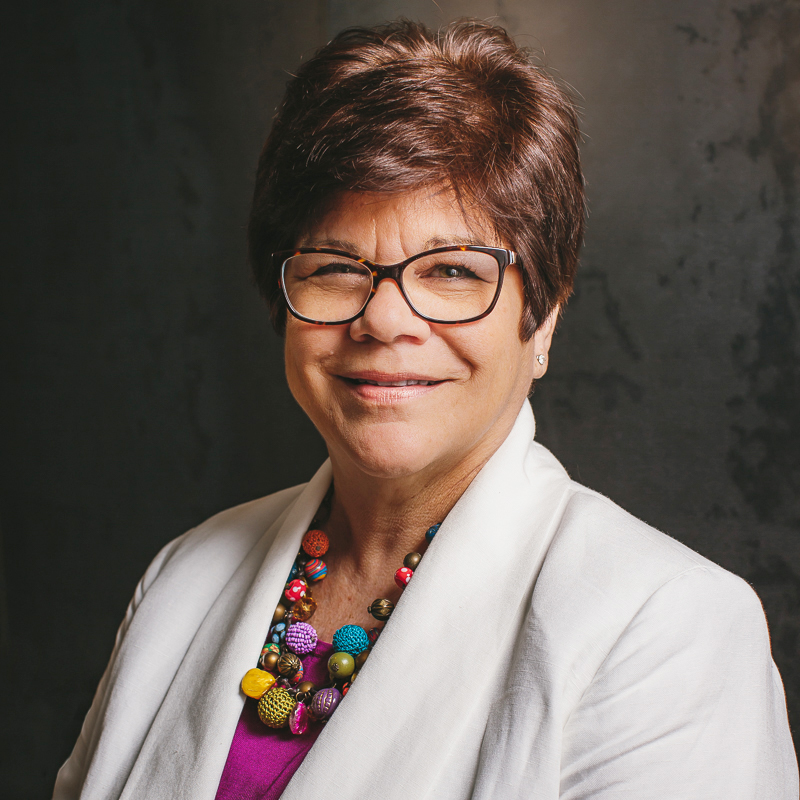 Holly Teague, Educational Consultant, Huckabee
Holly Teague, Educational Consultant, Huckabee
Holly specializes in educational visioning and programming for elementary education and early learning. She is a former educator, Assistant Principal and Principal and served in these roles for 20 years before moving into administration. Holly works in collaboration with school districts and Huckabee’s project teams to help plan for and evaluate how instruction is represented through design. She brings a unique perspective that is wholly focused on the educator and student success.
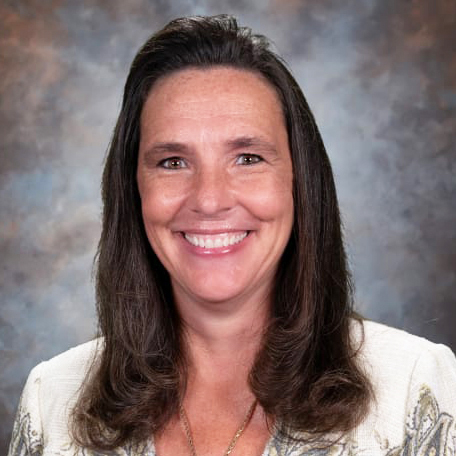 Melissa Duarte, Ed.D., Superintendent, Texas City ISD
Melissa Duarte, Ed.D., Superintendent, Texas City ISD
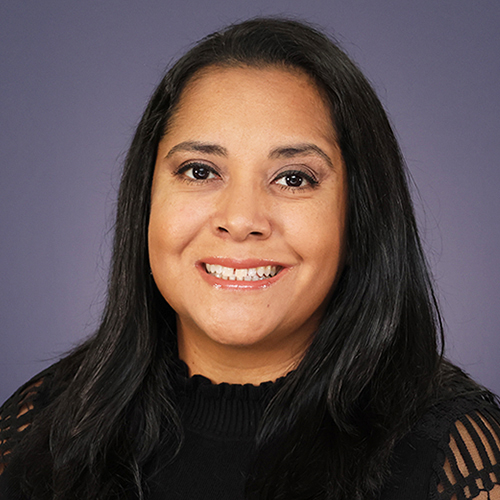 Brenda Garcia, Director of Facilities Planning & Construction, Goose Creek CISD
Brenda Garcia, Director of Facilities Planning & Construction, Goose Creek CISD
|
|
Breaking Barriers: Making the Case for Inclusion in Education and for School Design |
|
|
Galleon II
As a term, “inclusion” carries meaning for an array of circumstances. We want to define “Inclusion” in this presentation within the context of education and in designing schools. In education, the act of inclusion has been utilized for the beneficial features it provides students of special needs in applying the warranted resources that promote their educational achievement. We would like to advance that meaning of inclusion by its beneficial features for all students and the positive result in the school’s learning environment. In the presentation, we intend to demonstrate the features of inclusion and for the best practices it evokes that empower the learning environment for the betterment of all students and teachers. In addition, we intend to demonstrate how inclusive learning can achieve the education, facility operation and school organization goals for the project within an outstanding school design. Our objective is to prove that the practice of inclusion in education and architecture becomes beneficial as a pathway for the future of education and for excellence in the learning environments which inclusion fosters. Each co-presenter establishes a broad perspective of inclusion: Educational, Facilities & Planning, and Design.
Learning Objectives:
- Employ Project Planning engages inclusive practices in the programming, design and aligning with School Facility Standards of 2021 for flexible environments.
- To implement inclusive practices in an instructional facility requires exceptional project management skills required to disseminate a understanding of inclusion among project teams, community, clients and contractors to best implement these practices.
- Evaluation of a district’s requirements to fully engage in Inclusion for all students. are critical to establishing a successful inclusive environment for students to empower personalize learning opportunities.
- Enacting inclusive practices an empowerment of all students from those with special needs to students seeking educational achievement.
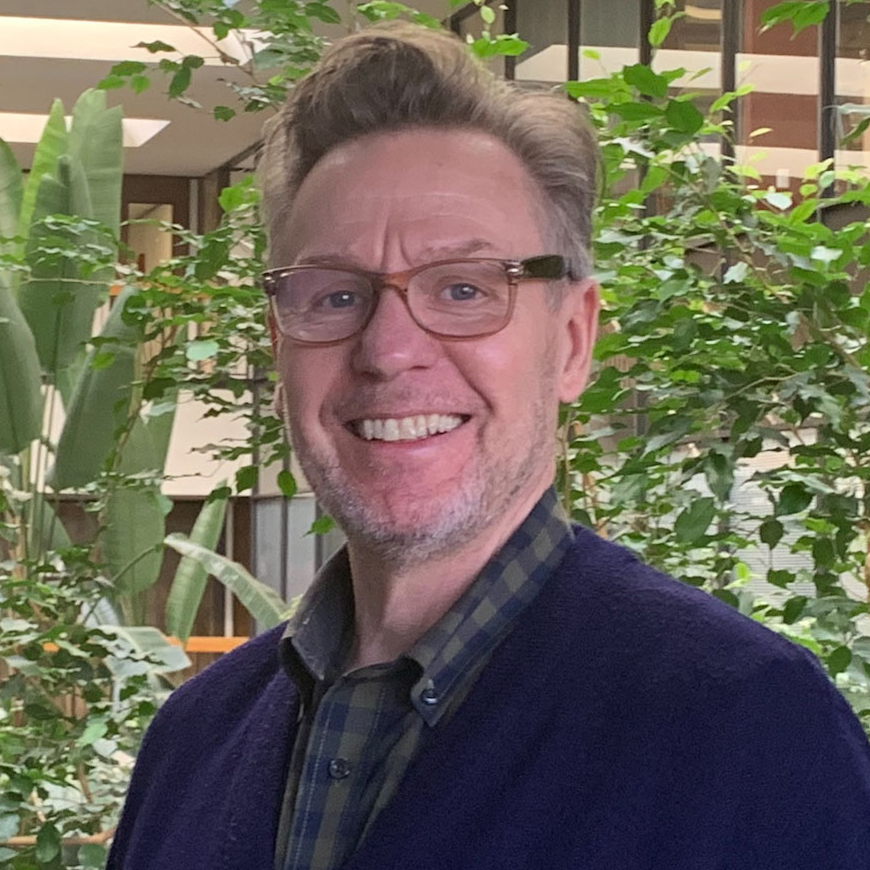 Gregory Louviere, Design Manager, GPD Group
Gregory Louviere, Design Manager, GPD Group
Greg brings 20+ years of experience in designing for architectural and interior learning environments that expand the boundaries of education. He believes that the formation of a successful architectural design begins with a clear vision of what constitutes community, experience, agency and organization as the foundation for a successful learning environment. Greg seeks to create spaces that foster meaningful interactions, instructional clarity and that seamlessly meld real-world, social and academic experiences.
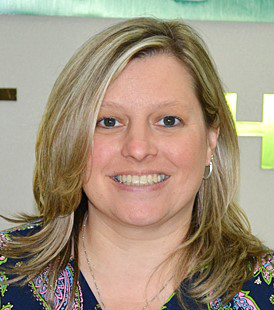 Kathleen Jahn, Deputy Superintendent of Curriculum and Instruction, Alief ISD
Kathleen Jahn, Deputy Superintendent of Curriculum and Instruction, Alief ISD
Kathleen has been in education for 32 years in both Maryland and Texas. She has been a middle school Reading, English and Spanish teacher, an assistant principal, an elementary principal, Executive Director of Curriculum and Instruction, and now serves as Deputy Superintendent for Alief ISD in Houston, TX. She has served on district, regional and state level committees for both leadership and instructional initiatives, with a focus on early childhood, school improvement and post-secondary opportunities for emergent bilingual and other underserved populations. Kathleen earned a B.S. in Elementary Education from Towson State University in Towson, MD and earned an M. Ed in Administration and Supervision from University of Houston-Victoria in Victoria, TX and is pursuing a Doctorate (Ed. D) in Educational Leadership and Organizational Innovation from Marymount University in Arlington, VA.
 Hilda Rodriguez, Assistant Superintendent of Support Services, Alief ISD
Hilda Rodriguez, Assistant Superintendent of Support Services, Alief ISD
Hilda currently serves as the Assistant Superintendent of Support Services for the Alief Independent School District. In her role, she support teaching and learning by ensuring facilities are in optimum condition and conducive for learning. Hilda has been in her role for seven years and prior to this role, she served as a Science teacher, Assistant Principal, and Principal of Alief Elsik High School. As the Assistant Superintendent of Support Services, she leads and supervise directors to meet district operational goals in the following departments: Construction and Facilities, Maintenance and Operations, Transportation and Athletics. One major responsibility in Hilda’s role is to ensure that construction and capital improvement projects are planned, procured, constructed and/or renovated on time and within budget.
|
|
Resilience Rising: The Journey of a Community Transformed |
|
|
Galleon III
This conference presentation explores the innovative merger of two neighborhood schools situated in the newly developed Arlington Entertainment District: The C.B. Berry Elementary School and the Maude V. Roark Elementary School. The community economic system has been historically supported by local industries like the General Motors plant, these schools have long served working-class families for generations. However, with the emergence of a new identity and progressive educational ideology for access for every student to have a path to success within the district, the new C.B. Berry Elementary School, a transformative community merger is underway. The merger is not merely a logistical consolidation but a comprehensive reimagining of community education. The inclusive programming process revealed 4 impactful Guiding Principles - Community, Resilience, Wellness, and Future – the merger seeks to integrate the old school identities into a cohesive educational institution reflective of the evolving community landscape. The presentation will share some of the school's design that is centered around the learning journey . Inspired by the notion that education is a continuous process of growth and discovery, the design of the school is structured to emulate a journey. The metaphor extends beyond mere physical spaces; it encompasses the educational experiences and milestones students encounter as they progress through each grade level. For example, the concept of grade-level Pods as symbolic destinations within this journey. Just as travelers progress through different waypoints on a map, students advance through grade levels, each offering unique opportunities for growth and learning. Finally, this project navigated unprecedented challenges posed by the COVID-19 pandemic. This was the first Pandemic ZOOM Schematic Design Charette that Arlington ISD had experienced. Through this case study, attendees will gain insights into the adaptive measures implemented by Arlington ISD and HKS to foster resilience amidst uncertainty. The session aims to inspire educators, architects, and community leaders to embrace innovative approaches in addressing challenges, ultimately fostering more inclusive and resilient educational environments. Attendees will gain insights into the power of collaboration and community engagement in not only overcoming immediate challenges but also in laying the groundwork for a more resilient and inclusive future.
Learning Objectives:
- How a community can come together to discuss a new identity and future as they merge two campuses into one.
- How to manifest Meaningful GUIDING PRINCIPALS (all of which support HSW) into an Educational Facility supported by the Community.
- Develop a SAFE facility that takes a HOLISTIC approach to developing a facility that has Grade Level Pods that represent the Learning Journey – but also create SAFE ZONES in emergency situations.
- How to support Arlington ISD Learning Pedagogies in a built environment utilizing WELLNESS integration into the Architecture.
 Otis Reynaud, Principal – K-12 Practice Leader, HKS
Otis Reynaud, Principal – K-12 Practice Leader, HKS
Otis is a Principal at HKS, Inc. and is a Sector Practice leader for K-12 Public Schools. He has over 35 years’ experience in the Educational Facility Design Industry. Prior to his experience at HKS, he worked as an Associate Principal at PBK as Senior Client Executive to over 20 school districts in the Southern Region area. Wayne has promoted Safety & Wellness in Educational Facility Practice his entire career and has solidified this in his practice becoming WELL AP certified in 2018.
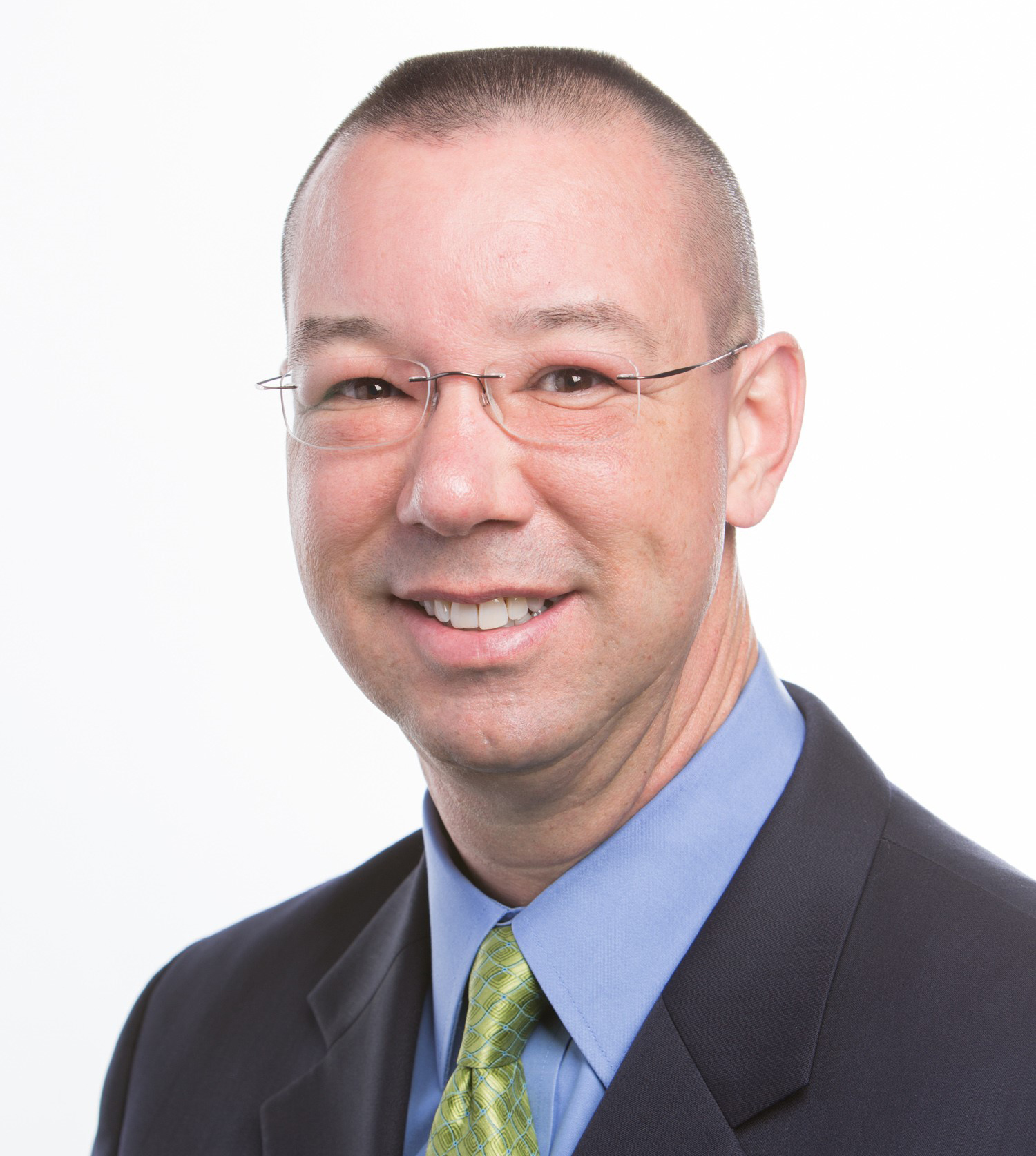 William Horn, Assistant Superintendent of Facility Services, Arlington ISD
William Horn, Assistant Superintendent of Facility Services, Arlington ISD
Kelly is a graduate of Texas A&M University where he earned a Bachelor of Science Degree from the College of Engineering in Industrial Distribution. He served faithfully on the NTX Board for A4LE and is a past president. He also served as a board member for the City of Irving Green Advisory Board and Keep Irving Beautiful. the construction of new facilities including the first “Net Zero” school in the state of Texas, and the development of an entire school district security network of cameras, door hardware and personnel access control.
 Mariana Santiago, Project Designer, HKS
Mariana Santiago, Project Designer, HKS
Mariana is an Associate at the HKS Dallas Education team, where she has learned the value of understanding individual approaches that converge in the efforts as one big firm. Coming from a family of educators and sharing the belief that small steps lead to big outcomes, Mariana aims to improve the future of Education one project at a time. She volunteers at the Dallas Architecture Forum program to become more involved with Dallas’s architectural scene while having exposure to important work in the DFW area and beyond.
|
| TUESDAY, MAY 7, 2024 | 10:15 – 11:15 AM |
|
School Safety: Emerging Conversations |
|
|
Galleon I
New TEA school safety requirements and legislation concerning school safety have direct impact on the learning environment. Session presenters are members of the Texas Society of Architects School Safety Subcommittee working directly for and with districts on these issues. The session will share advocacy work related to these issues, in depth updates on the latest rules, and resources for ongoing conversations in school districts.
Learning Objectives:
- Be introduced to the TxA School Safety Subcommittee and the initiatives they are supporting related to school safety.
- Understand the updated TEA school safety requirements.
- Understand the 88th Legislative Session bills related to school safety and how they relate to TEA standards.
- Gain a clear picture of the role of design and the built environment in implementing the new school safety rules.
Tommy Osborne, AIA, LEED AP, Executive Director of Construction, Northwest ISD
Tommy is a licensed architect with over 30 years of experience in design and construction of a multitude of market sector projects. The majority of his career has been in the K-12 market. Tommy is the Executive Director of Construction for Northwest ISD, which is the fastest growing school district in North Texas.
 Abby Hiles, AIA, Associate Principal / Operations Director, BRW Architects
Abby Hiles, AIA, Associate Principal / Operations Director, BRW Architects
Abby has 17 years of architectural experience with an acute focus on education projects. Formerly a Director and Project Manager in BRW’s K12 Education Studio, she now serves as BRW’s Operations Director focusing on the integration of operational standards, quality assurance practices, and technology firmwide. As Operations Director, Abby provides effective resources and resilient processes, ensuring every project is set up for success from the start.
 Lauren Brown, AIA, NCARB, Principal, VLK Architects
Lauren Brown, AIA, NCARB, Principal, VLK Architects
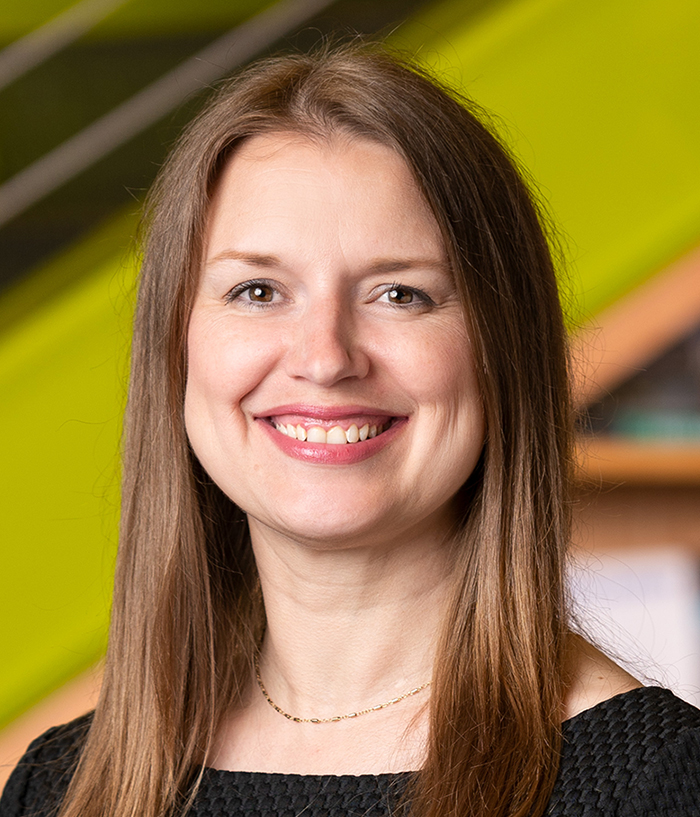 Becky Walker, Director of Government Affairs and Advocacy, Texas Society of Architects
Becky Walker, Director of Government Affairs and Advocacy, Texas Society of Architects
Becky is the Director of Government Affairs and Advocacy for the Texas Society of Architects (TxA). In her role, she represents TxA in state legislative and regulatory matters. During the legislative sessions, she champions TxA’s legislative priorities through her relationships with elected officials and allied stakeholders. She is a registered lobbyist in the state of Texas.
Before joining TxA in 2018, Becky served as Legislative and Communications Director for a Texas State Senator. In her more than 15 years of experience working in state government and Texas politics, she has developed a broad professional network and public policy expertise.
|
|
Solving the Early Education Equation |
|
|
Galleon II
Demand for early education, and research supporting its lifelong impact, has some districts grappling with the best approach to deliver sought-after programs for young learners. Early education is as unique as the learners themselves, and multiple variables must be weighed to align with the district’s educational vision for its community. Our process with Tomball ISD involved client stakeholders and design partners from beginning to end. We guided the client through an immersive process, allowing decision makers and designers to think with the mind of a child. Appropriately sized classrooms for agile learning, access to daylight, and wonder and discovery through non-linear wayfinding are some elements we discussed for this specific age group. This presentation will address how we began visioning as a discussion centered on teaching and learning, spaces required to successfully foster it, and subsequently how those spatial relationships manifested themselves in the new academy.
Learning Objectives:
- See how the environment becomes a learning tool for exploration, investigation, problem solving, and creative imagining.
- Explore how the design inspires a love of nature through the interplay of nature between humans and the world around them.
- Understand how appropriate scale in the learning environment enhances the early learning experience.
- Understand how a fully integrated design process increases efficiency from design through construction.
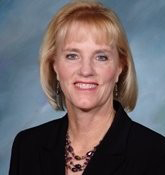 Dr. Marylin Denison, BOLD Educational Design Leader, DLR Group
Dr. Marylin Denison, BOLD Educational Design Leader, DLR Group
Dr. Marilyn Denison has built her reputation on leadership growth, personalized, and innovative learning design. With a focus on educators as designers and students learning how to learn, the educational environment shifts to preparing students for their future instead of our past.
Jillian Diffee, Interior Designer, DLR Group
Jillian is a passionate about the connection between humans and their environments. She believes the physical environment has a massive effect on our metal health and emotional well-being. Jillian's goal on each project is to tailor unique solutions in the built environment that support the total well-being of all inhabitants.
|
|
Breathing New Life into Aging Campuses: Making a case for facility renovations |
|
|
Galleon III
With growing population, comes the need for increased enrollment. As districts grow within its boundaries and add new state of art campuses, the communities that are zoned to older existing campuses can feel neglected. Many of these older campuses deal with accessibility, code compliance and building systems issues. Communities within the districts have strong ties to some of these older campuses. Let us discuss how as a school district these aspects could be reviewed, planned and with successful partnerships be executed to ensure that every child benefits from attending a campus that meets today’s learning needs and is set for future success. Katy ISD is one such District that has successfully executed many comprehensive renovations to existing campuses that has transformed the learning environment for the students while bringing parity with their brand-new facilities. In our presentation, we will discuss two such elementary school campuses in Katy ISD with varied levels of scope of work, schedules and complexity. The team will also discuss construction manager’s role and pre-construction for such comprehensive renovations.
Learning Objectives:
- Learn about facility assessment and how this drives the budgets for bond planning.
- Understand construction phasing and scheduling for complex facility renovations.
- Learn about interior learning environments and how it relates to wellness.
- Have the opportunity to learn about how improvements in the learning environment impacts education.
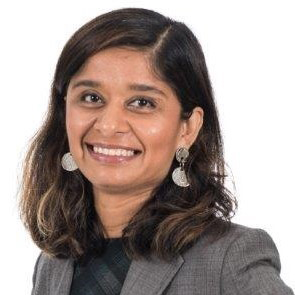 Parul Vyas, Principal, Stantec Architects Inc
Parul Vyas, Principal, Stantec Architects Inc
Parul, a Principal at Stantec, partners with educators and community leaders to facilitate 21st century learning environments for the future generation. In her career span of over 25 years, she has executed a variety of K-12 projects that provide our students with rewarding academic experience. Parul serves on the A4LE Gulf Coast Chapter Board and actively volunteers her time to support the organization.
Trey Barnett, Construction Project Manager, Katy ISD
Trey has been with Katy ISD for 10 years and serves as a Construction Project Manager. In his career at Katy ISD's construction and facilities department he has worked on many K-12 projects both new and renovations. Prior to working with the school district, since 2005 he worked in the general construction industry with a primary focus on education facilities.
 Jeff Couvillion, Preconstruction Leader, Stewart Builders
Jeff Couvillion, Preconstruction Leader, Stewart Builders
Jeff joined Stewart Builders after a 15-year career at Alvin Independent School District in the Building Programs Department. He brings years of experience to the construction industry with his role of Executive Director at Alvin ISD and now as business executive at Stewart Builders where he works to build meaningful relationships with clients.
|
| TUESDAY, MAY 7, 2024 | 1:00 – 2:00 PM |
|
Beyond the Drawing Board: VR and AR's Role in Shaping Future Schools |
|
|
Galleon I
“Beyond the Drawing Board” presents a pioneering exploration into how Virtual Reality (VR) and Augmented Reality (AR) are reshaping the design of educational spaces across K-12 schools and higher education institutions. This transformative journey, enhanced by live demonstrations of VR and AR within the presentation, reveals a future where educational architecture transcends traditional boundaries, offering a more dynamic, interactive, and immersive approach to design. This presentation showcases the evolution from standard 2D and 3D design methods to the advanced, immersive experiences provided by VR and AR technologies. By enabling architects, educators, and students at all educational levels to virtually inhabit future learning environments, these technologies foster a deeper, more tangible understanding of architectural designs and concepts. This innovative approach facilitates a comprehensive and interactive design process, leading to more effective and efficient creation of educational spaces. The adoption of VR and AR in educational architecture is instrumental in proactively identifying and addressing design challenges. These technologies allow for an in-depth examination of spatial dynamics, ensuring that potential issues are identified and resolved well before the construction phase, thus enhancing project efficiency and cost-effectiveness. Crucially, the benefits of VR and AR extend into the realm of education, directly involving educators and students in the design process. Through virtual and augmented walkthroughs, the end-users of these spaces become active participants in their creation. This inclusive approach fosters a deeper connection to the school environment and ensures that the final design resonates with its users' needs and aspirations. The presentation promises not only a theoretical exploration of these technologies but also an immersive, hands-on experience. Attendees will witness firsthand the transformative capabilities of VR and AR in visualizing and interacting with future educational spaces, gaining insights into their potential across various educational levels. In “Beyond the Drawing Board,” we invite you to envision a future where VR and AR are not just innovative tools, but transformative forces in the creation of educational spaces. These technologies are poised to enhance functionality, safety, and inspiration in educational environments, catering to the evolving needs of students and educators in both K-12 and higher education settings.
Learning Objectives:
- Understand how virtual and augmented reality technologies can improve the health impact of design decisions by enhancing the environmental quality of educational spaces, particularly through optimized natural light which contributes to the well-being of building occupants.
- Learn about the role of VR and AR in simulating and planning safety features within educational facilities, such as emergency evacuation routes and security measures, to ensure the safety and protection of all building users.
- The session will explore the potential of VR and AR to foster inclusive design practices, ensuring that educational environments are accessible and meet the diverse needs of all users, thus enhancing social welfare and interaction.
- Through live demonstrations, attendees will gain practical insights into how VR and AR can be integrated into the project planning and design processes, emphasizing sustainable and welfare-oriented approaches to educational architecture.
Christopher Martin, Sr. Associate, HarrisonKornberg Architects
Christopher, a Texas Tech University alumnus with a Bachelor's in Architecture, honed his expertise at SCI-Arc, Los Angeles, with a Master's focused on Augmented Reality in Architecture. His career spans from Southern California to Texas, collaborating with various public sectors and educational institutions. Now a Senior Associate at HarrisonKornberg Architects in Houston, he is recognized within the firm for pioneering VR integration, showcasing a dedication to innovation in architectural practice.
|
|
Creating a Transformation Movement: A Collaborative Journey toward Change at Forest Park Elementary School |
|
|
Galleon II
Our presentation delves into the inspiring story of Forest Park Elementary School in Winston-Salem, NC. Through a unique case study, we showcase a collaborative effort to transform the school’s media center into a vibrant and inclusive space for students, staff, and the community. Overview: Research underscores the pivotal role in transforming learning in K-12 schools is the transformation of learning spaces. Yet millions of students throughout North America continue to walk into dated facilities and traditional in-line, inflexible environments. Our journey begins with a question: How can we build a transformation movement that transcends school boundaries, starting with a central and often under-utilized learning space—the school library? The Collaborative Effort: In this presentation, we will take you on a journey to design a vision of a media center that goes beyond a repository of books and serves as a dynamic and transformative space for students, staff, and the community. The Forest Park Elementary School Media Center Project is a collaboration involving a Title I school district, a philanthropic organization, and a manufacturer. Learn how space has brought the vision of the school and district to life allowing for opportunity, access, and collaboration. Together, we explore the impact of dynamic, flexible learning spaces on the momentum of change. Conclusion: Our presentation promises a compelling and informative session, offering valuable insights into how transforming a space can spark a broader movement. The Forest Park story is one of inspiration, collaboration, and inclusivity. We believe our experience will resonate with conference attendees, inspiring them to embark on their own transformative journeys. We look forward to sharing this transformative story with the conference attendees and igniting a passion for inspired design, personalized learning, and inclusive processes. Together, let’s create a movement that positively impacts education for all.
Learning Objectives:
- Insights into Core Design Principles: Gain a deep understanding of the three core design principles guiding the transformation; providing insights into translating a vision into a tangible reality. The design principles, inspired by Generation Alpha, allow us to explore the challenges and triumphs of designing a media space that caters to students’ unique needs and balancing the needs of the community.
- Forest Park Perspectives: Hear firsthand from Forest Park school personnel on how the library's transformation has sparked positive change within their school community. Explore the broader impact on students, staff, and the community.
- Results and Transformation: Witness the journey of our dedicated team of volunteers who invested their time in changing a community. Explore the tangible results and transformation that occurred through the redesigned media center.
- Facilitating Collaboration: Understand how the newly designed media center facilitates students to actively discover and create, immerse themselves in the pages of books, and autonomously select reading materials.
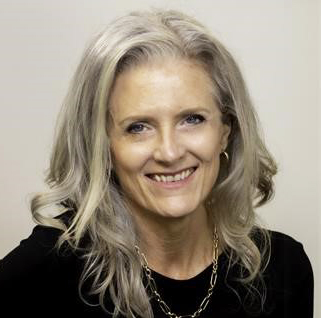 Patricia Cadigan, VP Learning Environments, ARTCOBELL
Patricia Cadigan, VP Learning Environments, ARTCOBELL
Patricia is a seasoned education professional with 28-year journey dedicated to shaping the landscape of public education. With over 17 years in school administration and a rich background as a teacher, Patricia brings a unique blend of instructional expertise and leadership acumen to her diverse roles within the educational realm. Throughout her dynamic career, she ascended through various leadership roles at elementary, middle, and high school levels, accumulating a wealth of experience and insights that have shaped her holistic understanding of the educational landscape. Joining forces with the Artcobell team, Patricia now brings her extensive user experience to the forefront, where she plays a pivotal role in shaping the intersection of learning spaces and best practices in teaching. Her multifaceted role encompasses professional development, training, programming, planning, and research, as she collaborates with educators to ensure that educational spaces are not just physical environments but dynamic hubs of inspiration and innovation. Her dedication to creating optimal spaces for learning is further underscored by her achievement of ALEP certification, a testament to her commitment to excellence in educational facility planning.
 Tiffany Ramey, Librarian, Forest Park Elementary
Tiffany Ramey, Librarian, Forest Park Elementary
Tiffany is not just a librarian; she’s a guardian of knowledge, fostering a love for literature and learning in the hearts of students. With a Master’s degree in Library Science and a passion for connecting readers with the perfect book, Tiffany is the newly appointed librarian at Forest Park Elementary. Known for her warm smile and enthusiasm for storytelling, Tiffany creates an inviting atmosphere in the school library, making it a haven for curious minds. She orchestrates engaging reading programs and literacy initiatives, encouraging students to explore diverse genres and expand their horizons. In her personal time, her husband, Adrian, and two children, Aiden (11) and Lydia (8) enjoy spending time together, vacationing at the beach, and finding new places to visit.
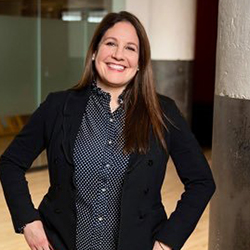 Jill Heath, President and CEO, Heart of America
Jill Heath, President and CEO, Heart of America
Jill is a transformative leader at the helm of Heart of America (HOA), an organization dedicated to reshaping learning environments, closing resource gaps, and fortifying communities to create space for every student to dream, discover, and thrive. With a resolute commitment to education equity, the HOA team is leaving an indelible mark on the educational landscape. Under Jill’s visionary leadership, Heart of America has successfully renovated nearly 1,000 spaces, ranging from classrooms and libraries to STEAM labs, college/career centers, school gymnasiums, and community centers. The organization has distributed over 4.4 million books and infused more than $9.5 million in technology, thereby empowering students with the tools and environments they need for holistic development. Jill’s approach is rooted in a deep understanding of the complexities surrounding education equity. As a manager, she played a pivotal role in the success of her team, earning gratitude for her unwavering support and dedication. Her ability to navigate intricate issues while keeping a laser focus on results has been a driving force in realizing the organization's mission.
|
|
Going With the Flow: Choosing a Different Model for Flood Mitigation |
|
|
Galleon III
The saying goes that nothing in life can be certain except death and taxes. But for those who live in the coastal plains of southeast Texas there is a third guarantee – flooding. Short of building an ark, Texans have done nearly everything in their power to mitigate the destruction brought on by hurricanes and tropical storms to little avail. So, one district is re-framing their approach to designing storm-ready schools; instead of trying to prevent flooding, why not prepare schools to flood – because they will – in a way that minimizes damage and allows for the most efficient clean up? Hamshire Fannett Independent School district sits in an unincorporated region of Jefferson County, which makes up the southeasternmost corner of Texas. Bordered by the Gulf of Mexico to the south and several lakes and rivers along the state’s eastern border with Louisiana, the prairie terrain of this region is extremely susceptible to flooding. The district’s lone high school flooded during tropical storm Imelda in 2019, destroying the repairs from Hurricane Harvey just months after they were complete. Prior to that, the building had experienced some degree of damage with nearly every severe weather incident it faces. Constant repairs add up, and to know that future floods are inevitable, the district needed a solution that would be sustainable long-term. In this session we will discuss the steps that were taken and strategies that were utilized in design and constructability practices to remain resilient in the face of destruction.
Learning Objectives:
- Apply flood design strategies that minimize the impact of flooding by allowing water infiltration.
- Identify materials that are resistant to water infiltration.
- Employ the correct considerations of site hydrology design when working with existing site conditions in a flood plain.
- Understand how to utilize cost saving strategies on flood mitigation and resilience.
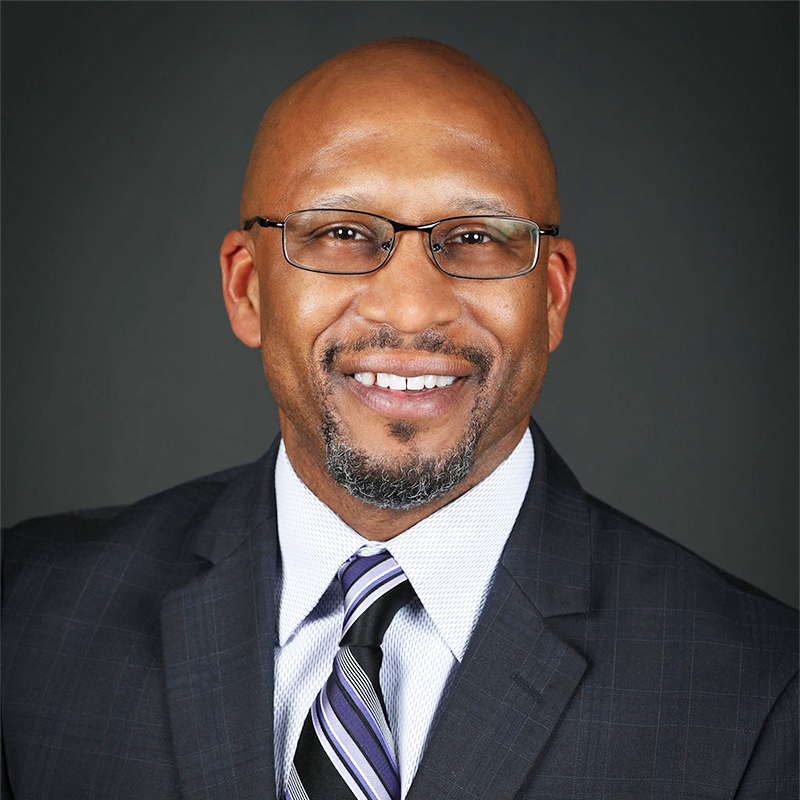 Dr. Dwaine K. Augustine, Superintendent, Hamshire-Fannett ISD
Dr. Dwaine K. Augustine, Superintendent, Hamshire-Fannett ISD
Dr. Dwaine K. Augustine has served as superintendent of Hamshire-Fannett ISD since 2016. He has been involved in numerous construction projects including remodels, builds, and rebuilds of school buildings and support facilities. Dr. Augustine has served as a school district emergency management coordinator for over 10 years and draws from work experiences as a professional fire fighter and military service. He has led the district through multiple disasters: fire, flooding, and the COVID-19 pandemic.
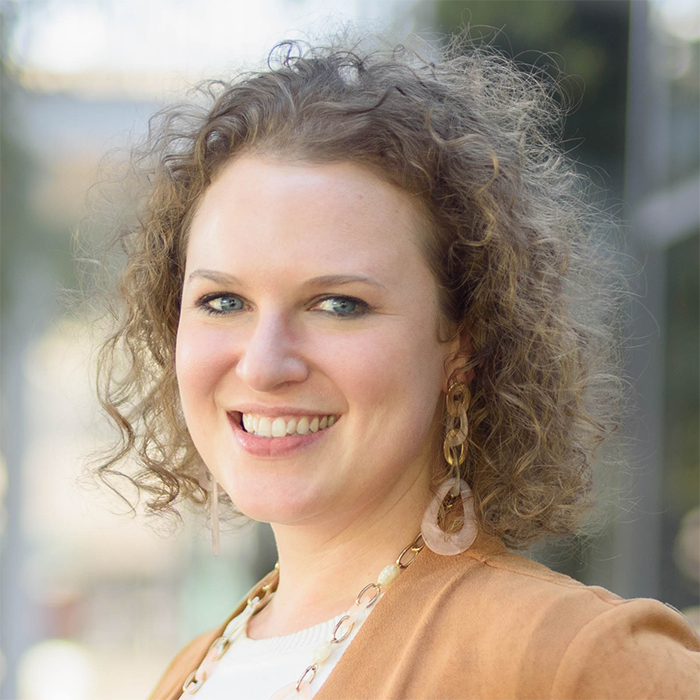 Sofia Dusek, AIA, LEED AP BD + C, Principal, PBK
Sofia Dusek, AIA, LEED AP BD + C, Principal, PBK
Sofia is a licensed architect with more than 16 years of experience in the industry. During her tenure at PBK she has overseen the planning, design, and successful completion of multiple K-12 bond programs. With a passion for planning, communities, and design Sofia is a proud member of the Angleton ISD Education Foundation Board of Directors, the Goose Creek CISD Career Academy Advisory Board and the AIA Houston Chapter Urban Design Committee.
|
| TUESDAY, MAY 7, 2024 | 2:30 – 3:30 PM |
|
Creating Innovative Learning Environments Amidst Inflation Through Value Engineering |
|
|
Galleon I
This session will focus on navigating planned school renovations and expansions through budget constraints and escalating inflation. Using the ongoing transformation of Fort Worth ISD’s Forest Oak Middle School as a case study, district representatives and leading architects will discuss how to prioritize the student experience and the creation of innovative learning environments in the face of challenges through a collaborative value engineering process.
Learning Objectives:
- How to re-strategize planned school renovations and expansions in the face of budget constraints and inflation.
- How to navigate difficult decisions and re-evaluate priorities during the value-engineering process.
- The importance of establishing strong partnerships between the school district, architects, and contractors, and how to collaborate to develop solutions.
- Strategic design decisions that can help bond dollars go further.
 Barbara Rystrom, AIA, NCARB, LEED AP, BD+C, Senior Project Manager, Associate, Perkins&Will
Barbara Rystrom, AIA, NCARB, LEED AP, BD+C, Senior Project Manager, Associate, Perkins&Will
Barbara is a Senior Project Manager and Associate at Perkins&Will. A registered architect in both the U.S. and Mexico, she has 20+ years of experience focusing on delivering safe, future-ready spaces to support and inspire K-12 students. She’s known to be a conscientious and detail-oriented leader, often guiding multiple project teams at a time. A member of A4LE, she has been identified as an emergent leader on the Global A4LE Strategic Plan Steering Committee.
 Kellie Spencer, Deputy Superintendent of Operations, Fort Worth ISD
Kellie Spencer, Deputy Superintendent of Operations, Fort Worth ISD
Kellie has three decades of experience serving Texas public schools with honor and integrity. Kellie is a strategic leader committed to the provision of exceptional learning environments for all students. She believes there is a direct correlation between learning environments and student achievement, a belief which serves as the driving force of her team. In 2023, she received an ONCON Icon Award and was named one of the Top 50 COOs in the U.S.
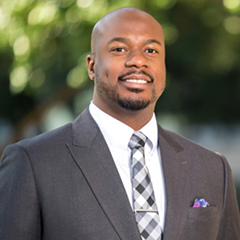 Brian Johnson, LEED AP, Vice President, Procedeo
Brian Johnson, LEED AP, Vice President, Procedeo
Brian, a Fort Worth native, started his career at Dallas ISD. During his eight years at DISD Brian oversaw $3+ billion in construction during the 2015 Bond Program. Currently, Brian serves as the Vice President of PROCEDEO, overseeing the largest Bond Program in Fort Worth ISD’s history, while championing student engagement and outreach organizations. He also participates in student design charrettes and provides mentorship for students interested in the AEC industry.
|
|
Resilient Building Design for Existing School Campuses; A Case Study of Flood Mitigation and Protection for Kingwood High School |
|
|
Galleon II
This session will take you through the devastation to Kingwood High School caused by Hurricane Harvey's flood waters and the subsequent steps taken by Humble ISD to bring the campus back to full operation utilizing robust flood mitigation and protection measures made possible through partnerships with FEMA, Flood Restoration Specialists, A/E Teams and Disaster Recovery Experts.
Learning Objectives:
- Project Management
- Design
- Documentation and Construction of Flood Restoration
- Mitigation and Protection for School Facilities
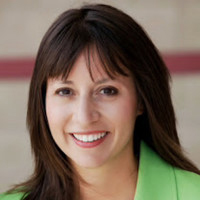 Elizabeth Fagen, Superintendent, Humble Independent School District
Elizabeth Fagen, Superintendent, Humble Independent School District
Teacher. Leader. Parent. Those three words characterize Dr. Elizabeth Fagen, who joined Humble ISD in July 2016 as Superintendent. Born and raised in Iowa, Dr. Fagen was the daughter of a public school educator. Naturally, she spent many evenings and weekends with her mother at school events. “Education is something that is a part of who I am, and really always have been,” Dr. Fagen said. Despite positive experiences as an educator’s daughter, Dr. Fagen did not initially plan to be a teacher. She thought she wanted to work in medicine. An unexpected job opportunity from a university dean to teach a college biology lab changed her life forever. “At the time, I was a Pizza Hut waitress, so I was super excited about the idea that I would get paid to teach,” Dr. Fagen said. “Once I actually taught, I realized that education is in my heart. It’s in my soul. It’s who I am. It’s what I wanted to do, and I immediately switched to be an education major.” She earned her bachelor’s degree from William Penn University in Oskaloosa, Iowa, and her doctoral and master’s degrees and her education specialist degree from Drake University in Des Moines, Iowa. She spent the first 12 years of her career in Iowa. Beginning as a high school biology and chemistry teacher, she progressed into positions as associate principal, principal, and executive director of high schools. Ultimately in Iowa, she became Associate Superintendent of Des Moines Independent School District. Dr. Fagen then spent the next 8 years of her career as a Superintendent, serving the Tucson Unified School District in Arizona and the Douglas County School District in Colorado. Each position strengthened her understanding of meeting student needs. “I’ve worked in the very poorest county in Iowa. I’ve worked in Douglas County, which is one of the most affluent counties in Colorado,” Dr. Fagen said. “I’ve had a really wide experience – urban, suburban, rural, and all of those have really helped me learn and grow as a teacher, and as a leader also.” In 2016, Humble ISD’s reputation for outstanding schools that serve the whole child attracted her to the district. “I am not only an educator and a superintendent, but also the parent of children in my own district,” Dr. Fagen said. “That’s very important to me. I feel like being a parent has made me a much better teacher and leader.” As a leader, Dr. Fagen believes each community is unique and that is why her top priority as Humble ISD’s Superintendent is to listen, learn and build relationships. “I don’t come to the table saying “Hey I’m here. I’ve got all the answers. Let’s get started doing the stuff I want,” Dr. Fagen said. “ I just don’t think that’s leadership. I equate it to the way we work with children. Children are unique. There’s not a one-size-fits-all approach that works for every single child, and I feel the same way about my role and my position.”
 Gregory Prince, AIA, Partner, PBK
Gregory Prince, AIA, Partner, PBK
As a registered architect in the states of Texas and Louisiana, Greg has more than 20 years of experience in architectural design and project management. He has been responsible for numerous K-12 educational, commercial, hospitality and federal projects with cumulative values in excess of $900 million over the course of his career. Currently, Greg serves as a K-12 Architectural Studio Director and Client Executive responsible for leading a team of architects and production staff, while maintaining multiple school districts. His management experience includes all phases of the design and construction administration processes, including feasibility studies, scope and programming development, contract negotiation, project scheduling and budgeting as well as some unique experience with large design/build federal projects. Greg’s sustainable design experiences include managing LEED and CHPS Certified projects, along with experience certifying projects with the U.S. Green Building Council. He oversees client relations in conjunction with our project teams and also enjoys working to further develop the abilities of the entire staff to ensure PBK continues to deliver unparalleled service to all our clients.
Dr. Jason Seybert, Associate Superintendent for Operational Support Services, Humble Independent School District
|
|
Strategic Leadership and Conservative Planning: Paving the Way for Sustainable School District Growth |
|
|
Galleon III
This session delves into the crucial role of robust leadership in preparing school districts for imminent growth. By adopting conservative planning strategies, leaders can cultivate community buy-in, ensuring a seamless transition into expansion initiatives. The discussion emphasizes the economic benefits of repurposing existing buildings within a district, showcasing the potential cost savings and sustainable practices associated with this approach. Moreover, the session underscores the importance of creating school campuses that are optimally sized and capacitated for future growth. The proactive alignment of facilities with anticipated student population increases proves instrumental in establishing a successful school district. By anticipating growth trends and implementing strategic plans in advance, leadership can not only enhance educational experiences but also effectively manage resources, contributing to the long-term viability and success of the district.
Learning Objectives:
- Understanding the Role of Conservative Planning: Gain insights into the importance of conservative planning in school district leadership and how it contributes to community buy-in, paving the way for effective growth strategies.
- Economics and Sustainability of Building Repurposing: Explore the economic benefits and sustainable practices associated with repurposing existing buildings within a school district, with a focus on promoting health, safety, and welfare in the learning environment.
- Optimizing School Campus Design for Growth and Safety: Provide participants with the knowledge to proactively design school campuses that are not only the right size and capacity for future growth but also prioritize health and safety standards, ensuring the well-being of students and staff.
- Programming and Analysis for Fast-Growth Success: Learn about the critical impact of programming and analysis on the overall success of a fast-growing school district. The session will highlight key strategies for effective planning, resource management, and the creation of a resilient foundation for sustained success.
 Kevin Moran, Superintendent, Waller ISD
Kevin Moran, Superintendent, Waller ISD
Waller ISD (WISD) Superintendent, Kevin Moran, has more than 30 years of experience in Texas public education. He is known for his collaborative leadership style, thoughtful decision-making, transparent approach to stakeholder involvement, and servant's heart. Moran earned his Bachelor of Arts in Education from Bloomsburg State University in Pennsylvania and Master of Science in Education from the University of Houston.
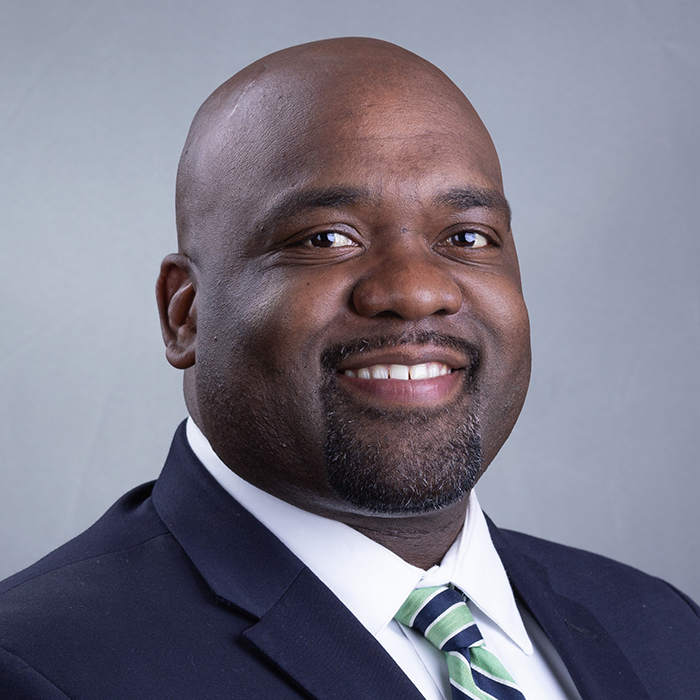 Bennie Mayes, Secondary Chief of Schools, Waller ISD
Bennie Mayes, Secondary Chief of Schools, Waller ISD
Waller ISD (WISD) Chief of Secondary Schools Bennie Mayes has over 21 years of experience serving Texas public schools. He is known for his ability to connect with and be an inspiration to others, strategic decision-making, adaptability, and problem-solving. Mayes is a servant leader who is dedicated to caring for students, staff, and the community. Mayes earned his Bachelor of Science degree in Education and Master’s Degree in Education Administration from Prairie View A&M University.
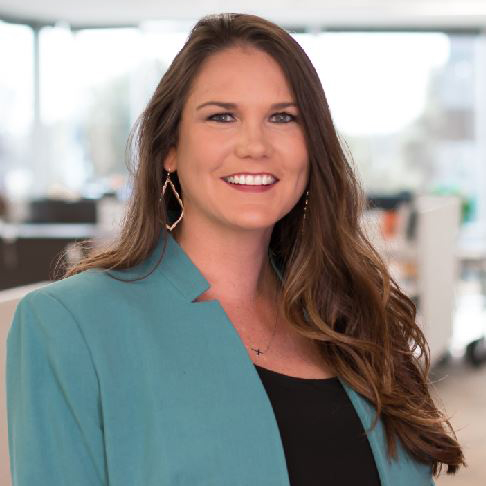 Melissa Fleming, Principal, VLK Architects
Melissa Fleming, Principal, VLK Architects
Melissa is an essential part of VLK’s success in the Houston market. A mentor to the Houston staff, Melissa is also a strategist in the expansion of the firm’s reach in the region. With a rare combination of technical authority and client expertise, Melissa develops connections with her clients and their stakeholders to genuinely understand their needs and expectations.
|
| WEDNESDAY, MAY 8, 2024 | 10:45 – 11:45 AM |
|
Building for Tomorrow: Navigating Trends in School Design and Construction |
|
|
Galleon I
Join us for an informative and engaging panel discussion featuring construction directors from leading school districts, as they share their insights and experiences on the latest trends in school design and construction. In line with the conference theme of "Waves of Hope, Navigating Resilience and Balance," this session will delve into how school districts are incorporating resilience and balance into their construction projects, and the impact this is having on the educational environment. From innovative design and sustainable building practices to the use of technology and community engagement, our panelists will explore the cutting-edge developments shaping the future of school construction. Learn about the ways in which school districts are navigating the waves of change and uncertainty, and how they are finding hope and balance through their construction projects. Don't miss this opportunity to hear from industry experts and gain valuable insights into the future of school design and construction.
Learning Objectives:
- Understand the latest trends and developments in school design and construction, and how they are shaping the future of educational facilities.
- Learn about innovative design and sustainable building practices being implemented by leading school districts to build resilience and balance.
- Discover how technology is being used to improve the construction process and enhance the learning environment, while also promoting resilience and balance.
- Gain insights into the importance of community engagement in school district construction projects, and strategies for building support and collaboration to navigate the challenges and opportunities ahead.
 Russ Johnson, CEO | Trustee, True North Consulting Group | Lorena ISD
Russ Johnson, CEO | Trustee, True North Consulting Group | Lorena ISD
Russ is the Chief Executive Officer for True North Consulting Group, a national independent consulting firm focused on K12 technology, audiovisual, and security. Fueled by his passion for Texas public school advocacy, Russ was elected to the Lorena ISD school board in 2022. With a combined 30 years of working with hundreds of school districts in many capacities, Mr. Johnson offers a unique perspective on the state of public education and the trends in leadership, funding, technology, safety and security, and instructional excellence.
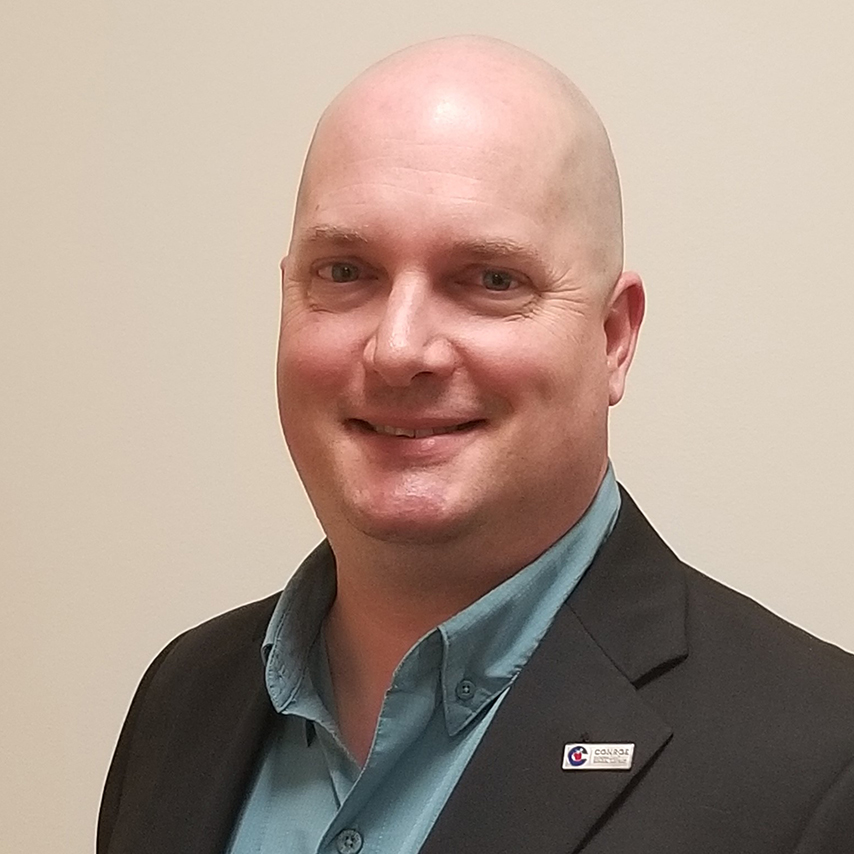 Easy Foster, RTSBA, AIC, CPC, LEED AP BD+C, Executive Director of Planning and Construction, Conroe ISD
Easy Foster, RTSBA, AIC, CPC, LEED AP BD+C, Executive Director of Planning and Construction, Conroe ISD
BS Construction Science – Texas A&M University; MS Management – Western Governors University; RTSBA – Recognized Texas School Business Administrator, TASBO AIC, CPC – American Institute of Constructors, Certified Professional Constructor, LEED AP BD+C.
August Wunderlick, Associate Superintendent for Facilities and School Services, Klein ISD
August grew up on a local truck farm, which he describes as “Old McDonald's Farm,” where present day Doerre Intermediate is located. At the age of sixteen, as part of a high school coop program, August began working as a Klein ISD custodian assigned to the district administration building. He continued working for the district and remained on a part-time basis during college. After graduating from Sam Houston State University, August taught at his alma mater Klein High School before moving to Klein Oak High School. He later transitioned to the maintenance department where he served in several leadership roles before becoming the Executive Director of Facilities and School Services. He currently serves as the Associate Superintendent for Facilities and School Services.
|
|
A Journey of Revitalizing Forest Meadow Junior High School through Innovative Construction and Overcoming Unexpected Challenges |
|
|
Galleon II
The Forest Meadow Junior High School Additions and Renovations project, for Richardson Independent School District, included the abatement and renovation of the existing school, as well as construction of a 58,305-square-foot addition to the campus located in Dallas, TX. The project included the addition of 23 classrooms suited for Fine Arts and Science, Technology, Engineering, and Math (STEM), weight/locker rooms, and a storm shelter. Additionally, there was a reconfiguration of the kitchen and expansion to the cafeteria areas, renovation to the existing science laboratories, and site improvements entailing additional parking, landscaping, and a new tennis court. Attendees will learn from the Client and Contractor’s perspective on how to implement a complex Addition and Renovation project to an occupied Junior High School campus. We’ll discuss educational facility planning, logistical challenges, unforeseen conditions, and overall project delivery. Attendees will have many takeaways to help guide a constructive and insightful conversation with their facility teams on how best to navigate a difficult situation while completing a successful construction project outcome. This project will begin the shift in Richardson Independent School District's Junior High School model to incorporate sixth graders from elementary schools to middle schools.
Learning Objectives:
- Innovative Construction Opportunities
- Navigating Complex Renovation Projects
- Effective Collaboration between the District and Contractor
- District Planning of Educational Facilities
 Gary Aanenson, Executive Vice President, CORE Construction
Gary Aanenson, Executive Vice President, CORE Construction
Gary is the Executive Vice President (EVP) of CORE Construction and has 13 years of experience. As the EVP of CORE, Gary is responsible for client service and operational oversite for all K12 projects. Gary comes from a family of contractors with both his father and grandfather still owning and operating construction businesses in Arizona. Gary attended Arizona State University and graduated with a degree in Construction Management. He moved to North Texas in 2018, and serves as President-Elect for the A4LE North Texas Chapter.
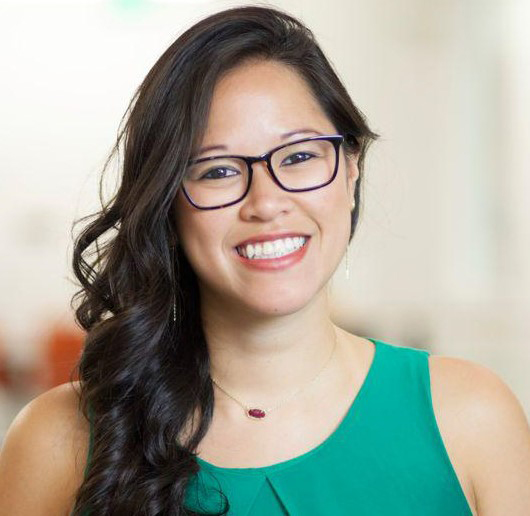 Le Korte, Executive Director of Facilities Planning, Design and Construction, Richardson ISD
Le Korte, Executive Director of Facilities Planning, Design and Construction, Richardson ISD
Le serves as the Executive Director of Facilities Planning, Design and Construction at Richardson ISD. Prior to moving to RISD, she spent 13 years in the private sector working on more than 15 education facilities including K-12 and higher education projects. She’s a registered architect in the state of Texas and registered interior designer. Her expertise and knowledge of both the private and public sector allow her to be a great leader at RISD. When she’s not focused on work, this native Texan enjoys being outdoors, and spending time with her golden retriever, Russet.
|
|
The Potential for Educational Architectural Design to Foster Mental Health and Well-being |
|
|
Galleon III
Concerning media headlines, alarming statistics, and first-hand experiences of the mental health struggles of school age children, teachers, and administrators are fueling a call within education to address mental health concerns. From ramping up efforts to provide mental health assessments to exploring on-site treatment options, there are a wide range of strategies and tactics that school districts are implementing to begin to address the issues involved. One underappreciated tool districts are exploring to foster mental health and well-being in these groups is to consider the very educational environments they study in. Humans respond to the built environment, and when thoughtfully designed, schools can evoke feelings of comfort and support. In Pecos-Barstow-Toyah ISD, an emphasis on student access to natural light, both inside a school and in outdoor learning environments, has made a dramatic impact. Beyond that, the district has found the potential for flexible learning spaces and collaboration areas to increase student engagement, which in turn, motivates teachers even further, enhancing their sense of professional accomplishment. PBT ISD and other districts have gone further still with intentional spaces. For example, several schools have found the inclusion of a calm room, also called a Zen Room, effective in students’ abilities to self-regulate their emotions. PBT ISD has also taken steps to ensure that its efforts to increase safety and security at its schools don’t inadvertently increase student anxiety by serving as a physical reminder of potential dangers. By designing security vestibules with transparencies versus barriers, the district is able to intentionally maintain the aesthetic appeal of a campus while still enhancing its security.
Learning Objectives:
- Identify the profound impact a school’s physical structure has on its students and staff and explore how to include something like access to natural light is part of the comprehensive design through Project Planning and Design.
- Investigate through audience participation how others have implemented design intended to positively impact mental health and well-being through either Programming and Analysis or Project Planning and Design avenues.
- Explore the critical role Project Planning and Design plays in the involving multiple stakeholders to collaborate on parts of the design process.
- Discuss the ways safety and security can be enhanced without sacrificing students’ and staff members’ sense of well-being in Project Planning and Design.
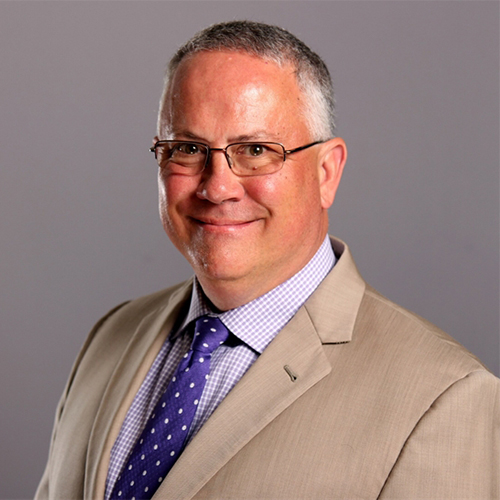 Brent Jaco, Superintendent, Pecos-Barstow-Toyah ISD
Brent Jaco, Superintendent, Pecos-Barstow-Toyah ISD
Brent joined Pecos-Barstow-Toyah ISD as Superintendent of Schools in July of 2020. He earned a Master of Business Administration with a focus on Organizational Leadership from Ashford University and an undergraduate degree from the University of Houston. Before starting his career in education, he honorably served our country as a United States naval officer from 1994 to 1998.
 Monika Castillo, Principal, VLK Architects
Monika Castillo, Principal, VLK Architects
Monika has demonstrates a high level of responsibility, not only with project teams, but with the entire office by possessing a “whatever it takes to get the job done” attitude, whether that is by writing specs, assisting with construction administration, or with mentoring others. With a Bachelor of Architecture and Bachelor of Structural Engineering from the University of Houston, she is dedicated to her clients and the success of their projects.
 Brad Ewing, Senior Associate, Architect, VLK Architects
Brad Ewing, Senior Associate, Architect, VLK Architects
Brad joined VLK in 2008 and has become a respected Senior Designer within the firm. With notable client projects such as Houston ISD’s Energy Institute, and the design of award winning prototype elementary schools within Katy ISD and Brazosport ISD, Ewing’s professionalism and insightful approach to providing innovative designs that impact education is impressive. He is considered a strong leader in the VLK Houston office because of his dedication to mentorship within the firm.
|
| WEDNESDAY, MAY 8, 2024 | 12:45 – 1:45 PM |
|
A Rainbow After the Storm: Rebuilding a Community Through Innovation and Resilience |
|
|
Galleon I
In the fall of 2019, a tornado swept through the heart of Dallas, and the site of Thomas Jefferson High School and Carry Middle School was near totaled. As the tight-knit community grieved, and the diverse student population was dispersed and relocated to other school sites, the district took the opportunity to re-envision and elevate the educational experience that would await them upon their return. Combining grades Pre-K through 12 on a single site, including Thomas Jefferson High School and the new PK-8 Walnut Hill International Leadership Academy (an IB campus), these two interconnected projects foster a strong sense of community for many cultures and celebrate school pride, while being good stewards of available funds. Weaving in photos, videos, and student and staff testimonials, this session will recount the journey this resilient community and innovative district made to persevere and evolve through tragedy. The visioning, design, and construction of this complex project is an example of resilience to follow.
Learning Objectives:
- Resiliency – Learn the power of resiliency and receive actionable steps to take after a natural disaster to foster learning, wellness, and hope to students during a turbulent time.
- Innovation – Be challenged and empowered to implement research-based learning innovations and creative campus solutions that respond to community input and empower students.
- Culture – Be inspired to identify what makes the cultures of their schools unique and how they can enrich them through customized programs and engaging spaces.
- Design and Construction – Learn how to restore and reimagine existing structures that have been affected by natural disasters.
 Jason Mellard, AIA, LEED AP, Senior Associate – Project Manager, Corgan
Jason Mellard, AIA, LEED AP, Senior Associate – Project Manager, Corgan
Jason has over 18 years of experience dedicated to education architecture with a keen interest in the overlay of educational advancements, personalized learning, technology infrastructure and virtual and physical environments. He has a passion for crafting spaces that inspire, inform, and innovate, partnering with clients to foster collaboration between students, educators, and professionals. Jason has been published numerous times on best practices and innovations.
 Leo Lopez, AIA, LEED AP, CDT, NCARB, Senior Associate, Project Architect, HED
Leo Lopez, AIA, LEED AP, CDT, NCARB, Senior Associate, Project Architect, HED
With over 24 years of experience as an architect, Leo has been responsible for overseeing the design documentation and construction administration of dozens of k-12 projects throughout the state. As a discipline leader, Leo has expertise on this role within large, complex projects bringing valuable knowledge. He has a reputation for working well with the client and developing a relationship with all stakeholders at hand.
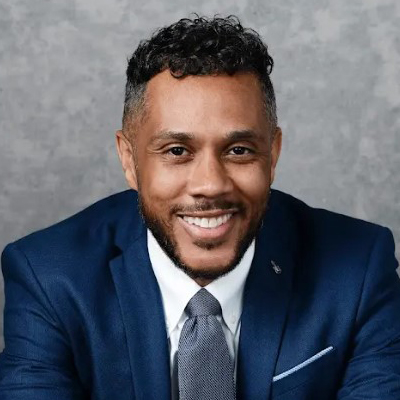 Brent Alfred, Chief Construction Officer, Dallas ISD
Brent Alfred, Chief Construction Officer, Dallas ISD
Brent is an accomplished leader with a proven record of managing and overseeing large capital projects for school districts. He is a registered architect and certified construction manager. Brent graduated from Southern University’s School of Architecture in Baton Rouge, LA. With more than 20 years of experience in the design and construction industry, the last 12 focused exclusively on K-12 schools and the learning environment. He has vast experience as a designer, project manager, and owner’s representative in construction.
In addition to his professional experience, Brent is a staunch community supporter and spends considerable time volunteering in the community and supporting students. He is particularly proud of his efforts in teaching entrepreneurial skills and building playgrounds for kids in communities of need throughout the area.
|
|
Building Tomorrow: Strategic Construction Coordination in Southern Region Texas School Districts |
|
|
Galleon II
The incredible boom in the Texas public education construction sector fueled by rapid demographic growth has required that districts rethink the strategic planning and implementation of the execution of bond programs. From optimizing timelines and resource allocation to navigating regulatory frameworks, attendees will gain insights into the complexities of managing construction projects in the current robust educational construction market. Join us for a detailed exploration of best practices, lessons learned, and the collaborative efforts that contribute to the successful implementation of bond programs ultimately shaping the future of learning environments in our Southern Region school districts.
Learning Objectives:
- Cost Optimization through Strategic Planning: Understanding strategic planning in construction coordination focuses on cost optimization. By efficiently managing timelines and resource allocation, school districts can maximize the value derived from tax dollars, demonstrating responsible financial stewardship.
- Collaborative Efforts: The collaborative efforts highlighted in the presentation extend to community impact. By fostering collaboration among school districts and stakeholders, there can be a positive ripple effect on the broader community, sharing resources, knowledge, and potentially reducing overall construction costs.
- Navigating Regulatory Frameworks: Bid scheduling involves navigating regulatory frameworks efficiently. Compliance with bidding regulations ensures fair competition, transparency, and accountability in the allocation of construction projects, aligning with fiscal responsibility and community trust.
- Lessons Learned and Best Practices: Exploring best practices and lessons learned contributes to fiscal responsibility. By identifying areas for improvement and efficiency gains, school districts can minimize financial waste and enhance the overall cost-effectiveness of construction projects.
 Lisa Kassman, Executive Director, Facilities, Planning, & Construction Department, Katy ISD
Lisa Kassman, Executive Director, Facilities, Planning, & Construction Department, Katy ISD
Lisa has been with Katy ISD since 2000 in the role of Construction Project Manager. She has not only worked on construction projects at 36 of our 80 facilities but has also been the main coordinator and Bond presenter of the Long Range Facilities Plans for 2006, 2010, and 2014. Her responsibilities as Executive Director of Facilities, Planning and Construction include facility design, construction, planning, property acquisition, and energy management.
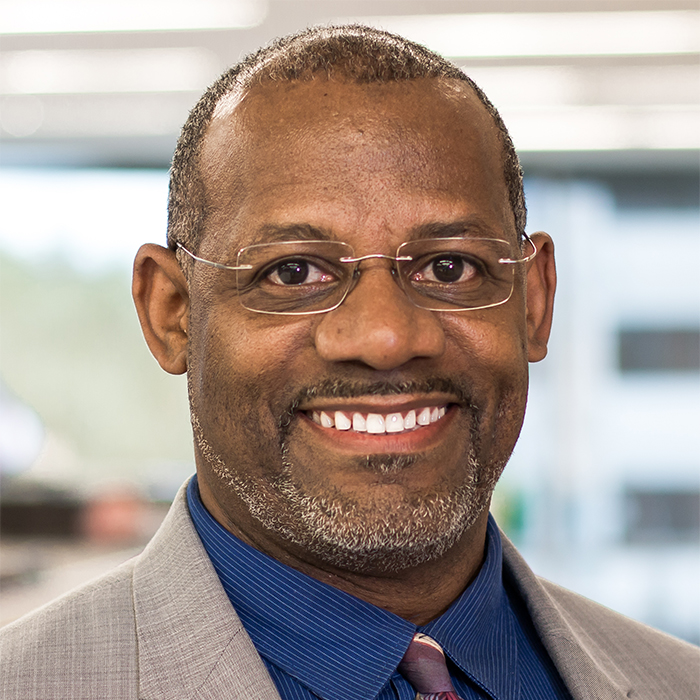 Rudy Starks, Senior Associate | Project Director, VLK Architects
Rudy Starks, Senior Associate | Project Director, VLK Architects
Rudy has emerged as mentor and leader within the firm and among those that he works with. His dedication to his project teams and the clients he serves is remarkable, building stronger relationships and creating successful project outcomes. With a Bachelor of Arts in Architecture and a Bachelor of Architecture from Iowa State University, Rudy continues to gain the respect of notable clients as Project Architect and Director, leading multiple projects in all phases.
 Brenda Garcia, Director of Facilities Planning & Construction, Goose Creek CISD
Brenda Garcia, Director of Facilities Planning & Construction, Goose Creek CISD
As Director of Facilities Planning & Construction for Goose Creek CISD, Brenda, a proud alum of the district, has the unique perspective of having served as Assistant Director and Project Manager of the department as well as Principals of Architecture and Construction teacher in the district. During her 13 years with the district, a primary focus has been the management of Bond projects as well as non-bond capital improvement projects.
|
|
Ports Against the Storm: Creating Better Learning Spaces for Kids with Special Needs |
|
|
Galleon III
While schools and centers for children with special needs may have more freedom and autonomy to shape innovative classrooms for neurodivergent kids, mainstream schools are seeing a rising tide of students with an increasing variety of sensory and cognitive needs. This presentation shares a wide range of cost-conscious, practical design ideas for creating better classrooms, therapy rooms, play spaces, and all the social-academic in-betweens that make up any school. Drawing on decades of designing and operating special needs schools, we will offer detailed and measurable design strategies for designing new and renovated learning environments, centered around the four dimensions of human ability.
Learning Objectives:
- Learn how the four dimensions of human ability – physical, sensory, cognitive, and social – shape and inform design strategies for learning spaces and schools.
- Through detailed examples from various schools, participants will understand how to apply these principles to improve learning and therapy space for their population.
- Learn how to apply these fundamental strategies to specific challenges and problems in their facilities and campuses.
 Marcus Adrian, Architect | Principal, Mackey Mitchell Architects
Marcus Adrian, Architect | Principal, Mackey Mitchell Architects
Marcus has dedicated years of his career to mastering the design of learning spaces, specializing in learning and care environments for special needs populations. Most of the schools and centers he has designed serve multi-disabled populations, requiring collaborative approaches between multiple therapy disciplines, to address each child’s combination of physical, sensory, cognitive and social needs. Marcus has been published widely and spoken at numerous national conferences. In 2009, he was recruited by ASHA to deliver a US Congressional Briefing on classroom acoustics on Capitol Hill. In 2017, he presented his design strategies and experience in a talk for TEDx Gateway Arch at UM St. Louis’ Touhill Center, attended by over 1,800 people.
 Valerie Linn, Executive Director, Magnolia Speech School
Valerie Linn, Executive Director, Magnolia Speech School
Prior to becoming executive director of Magnolia Speech School, Valerie, M.S. in Communicative Disorders/Speech Pathology, was the executive director of the Juvenile Diabetes Research Foundation in Jackson. Prior to her work as a non-profit executive director, Valerie worked for over 24 years as a pediatric speech/language pathologist. She served in various capacities, including clinic director and senior speech/language pathologist, at the Mississippi Society for Disabilities (formerly MS. Easter Seal Society), and as a speech/language pathologist at the Children’s Rehabilitation Center, Willowood Developmental Center and in county school districts.
 Paola Badea, Associate, Mackey Mitchell Architects
Paola Badea, Associate, Mackey Mitchell Architects
Paola’s commitment to meaningful design is underscored by her belief in architecture’s transformative power. She views learning environments as more than physical structures; they are integral components of the educational journey, shaping minds and fostering a sense of community. Whether navigating the complexities of campus planning or conceptualizing cutting-edge classroom designs, Paola’s goal remains steadfast – to create spaces that inspire curiosity, facilitate collaboration, and leave a lasting positive impact on those who inhabit them.
|
| WEDNESDAY, MAY 8, 2024 | 2:00 – 3:00 PM |
|
The Foundation of Architecture – Why Does Our Structure Cost so Much? |
|
|
Galleon I
Designing schools that support modern learning modalities and proactively anticipate future needs presents a paradigm shift in educational architecture. Creating dynamic, flexible, and sustainable spaces that foster creativity, collaboration, and learning, coupled with new code requirements, unique geological challenges, strict site requirements, and architectural complexity, demands a reevaluation of structural engineering practices to ensure that these innovative spaces are not only visually striking but also safe, resilient, functional, and fiscally responsible. In response to this challenge, owners, architects, and structural engineers are developing advanced strategies that integrate cutting-edge technologies, materials, and methodologies into their designs. These strategies encompass a wide range of considerations, including but not limited to: Impacts on Foundations due to geological conditions: Taking the appropriate time to study and understand each project site is imperative to the overall design of a building. We must utilize our resources to their utmost potential to prevent over-engineering and excessive strategies or techniques. One of our best tools is the collaboration and inclusion of our Geotechnical Engineers. Understanding the geology, characteristics, surface soil conditions, and additional factors impacts our structural designs and, inevitably, our project budgets. Architectural configuration and relation to building size compared to project budget: The facilities we are designing today and for the future continue to grow in scale. With the upsizing increase in square footage and the desire for more expansive, open, and flexible spaces, structural engineers face added challenges when designing structural systems and foundations that meet the architectural needs and the client’s budget.
Learning Objectives:
- Understanding site complexity/challenges, creative thinking and planning when analyzing site studies and reports, and using innovative strategies to render architectural goals while considering the project budget in today's market where materials are maintaining a higher cost and some scarcity.
 Easy Foster, RTSBA, AIC, CPC, LEED AP BD+C, Executive Director of Planning and Construction, Conroe ISD
Easy Foster, RTSBA, AIC, CPC, LEED AP BD+C, Executive Director of Planning and Construction, Conroe ISD
BS Construction Science – Texas A&M University; MS Management – Western Governors University; RTSBA – Recognized Texas School Business Administrator, TASBO AIC, CPC – American Institute of Constructors, Certified Professional Constructor, LEED AP BD+C.
 Cody Boyd, AIA, Principal, PBK Architects
Cody Boyd, AIA, Principal, PBK Architects
BS of Science in Architecture – The University of Texas at San Antonio; MS of Architecture – University of Houston; Register Architect, Texas AIA – American Institute of Architects.
 John Kubala, PE, President and CEO, Kubala Engineers
John Kubala, PE, President and CEO, Kubala Engineers
BS ARE Architectural Engineering (Structural Engineering for Buildings) – The University of Texas at Austin.
|
|
Hope is Not a Strategy – Renovate, Replace, or Repurpose? What to Do With an Aging Facility |
|
|
Galleon II
Renovate, Replace, or Repurpose? The decision is challenging, especially in communities where the existing school plays an important role for current and former students alike. Join us as we share valuable lessons learnt by working with communities over two decades to navigate these decisions. We will discuss the pros and cons of each choice that will help your district make the best decision possible.
Learning Objectives:
- Learn the pros and cons of renovating, replacing, or repurposing existing facilities—from financial, educational, environmental, and cultural perspectives.
- Learn how to assess their own facilities from each of these perspectives.
- Learn how to gather insight and utilize data from key community stakeholders, faculty, and students.
- Learn how school districts and communities can evaluate the path forward that suits them and their students best.
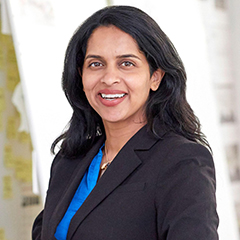 Vandana Nayak, Regional Practice Leader, Principal, Perkins&Will
Vandana Nayak, Regional Practice Leader, Principal, Perkins&Will
Having worked with educational clients for more than two decades, Vandana has a unique ability to understand her clients’ intentions and aspirations beyond simply listening to the words they say. This is especially powerful for her education clients who typically have a large number of constituents involved, all with diverse perspectives. She’s able to navigate through the many voices, create a clear vision, and translate that into a built facility that exceeds her clients’ expectations.
 Sandra Hayes, Assistant Superintendent, District Operations, Richardson ISD
Sandra Hayes, Assistant Superintendent, District Operations, Richardson ISD
Sandra has 30+ years of experience in education, beginning her tenure as a teacher and coach, then moved to central administration. She held positions in the Curriculum & Instruction, Instructional Technology, and Career & Technical Education departments before being appointed the Assistant Superintendent of Technology. Presently, Sandra is the Assistant Superintendent of Operations for Richardson ISD. Sandra completed her Superintendent Certification in a doctoral program at the University of North Texas.
 Le Korte, AIA, LEED AP® BD+C, Executive Director of Facilities Planning, Design and Construction, Richardson ISD
Le Korte, AIA, LEED AP® BD+C, Executive Director of Facilities Planning, Design and Construction, Richardson ISD
An alumnus of Texas A&M University and the University of Houston, Le is an architect and interior designer who spent 13+ years working in the private sector before joining Richardson ISD. Le has worked on over 15 educational facilities across K-12 and higher education, and has expertise in project management, bond planning, and strategic facilities planning. In 2022, she served on AIA Dallas’ Board of Directors and as chair of its Education Outreach Committee.
|
|
Navigating Changes in Safety & Security: Welcoming Community into Schools with TEA’s New Rules |
|
|
Galleon III
Forney ISD wanted to create a first of its kind learning facility that not only addressed their growing capacity needs at the high school level and a desire to expand CTE programming, but also provide immersive entrepreneurial experiences as well as learning opportunities for the entire Forney Family. The Keith Bell Opportunity Central provides learning for ages 3 to 103, higher education pathways for graduates and their families alike, spaces designed for ‘edutainment’, and a community resource for the entire district. The first floor is open to the public full time while the second and third floors are for high school students during the school day and higher education and community access after-hours. Join us to learn about how the team integrated safety and security into the design of a facility with public access, the facility requirements that were imposed on districts by state leaders, and how Forney ISD navigated getting into compliance.
Learning Objectives:
- Learn about the vision and purpose of the OC and its availability for students and community members.
- Better understand the process the district used to determine the safety and security design measures to achieve the vision and purpose.
- Identify which of the facility requirements of the new TEA safety and security requirements were more stringent than the building’s original design.
- Learn about the approach utilized by FISD to comply with the newly implemented safety and security rules.
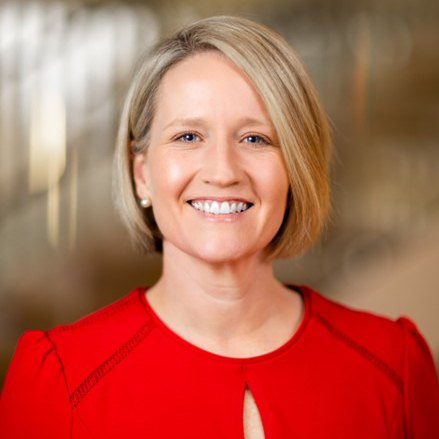 Kerri Brady, AIA, VP of Educational Practice, Huckabee
Kerri Brady, AIA, VP of Educational Practice, Huckabee
Kerri focuses on educational planning, educational research, school safety + security and change management. She helps clients shape the learning experience by facilitating in-depth conversations and explorations on vision, curriculum, experience and space. Kerri serves on the board of directors for the Texas School Safety Center as the architect member and plays an important leadership role in the LEx Collaborative, a partnership between Huckabee, ESC Region 12 and Baylor University that focuses on educational research and the built environment’s impact on student success.
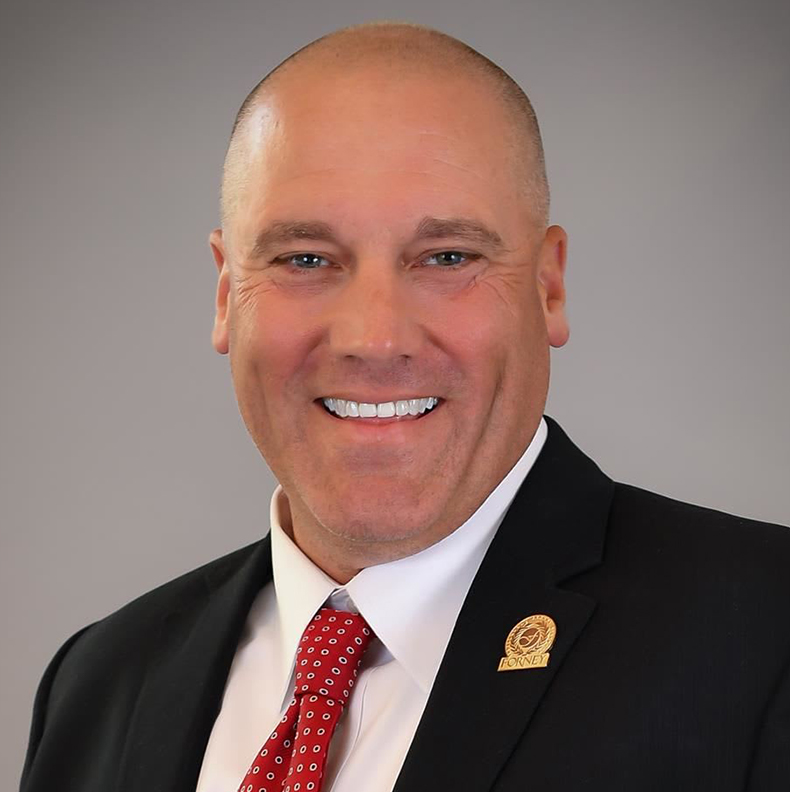 Justin Terry, Ed.D, Superintendent, Forney ISD
Justin Terry, Ed.D, Superintendent, Forney ISD
Dr. Terry has more than 22 years of experience in education. He is currently in his 6th year as superintendent of Forney ISD, and was named a 2022 NSPRA Superintendent to Watch.
Dr. Terry received his Bachelor’s Degree in Mathematics and Kinesiology from East Texas Baptist University in Marshall, Texas and he earned his Master’s Degree in Educational Leadership and Policy Study from the University of Texas in Arlington. He earned his Doctorate of Education from Texas A&M Commerce in Commerce, Texas. He has a Texas Superintendent Certification, a Texas Principal Certification, a Texas Teacher’s Certification in Mathematics, an Instructional Leadership Development Certification and a certification in the Professional Development and Appraisal System and the Texas Teacher Evaluation and Support System.
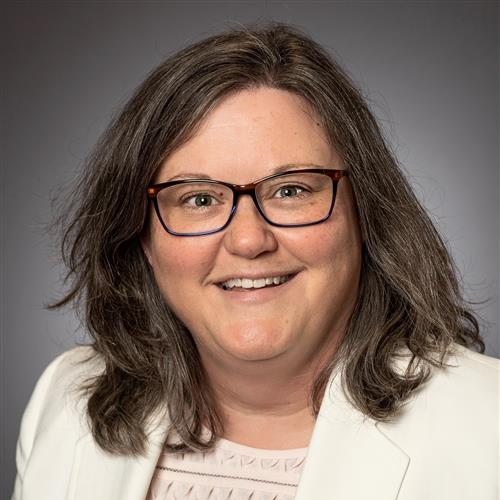 Kim Morisak, Chief Operations Officer, Forney ISD
Kim Morisak, Chief Operations Officer, Forney ISD
Kim is a career educator with 28 years of K-12 experience. She has served as a teacher, campus administrator and central office administrator. Kim is in her 10th year in Forney ISD where she serves as the Chief Operations Officer, and manages Technology, Food Services, Construction, Facilities & Maintenance, PEIMS and Growth and development. Kim received her Bachelor’s Degree in Biology from Texas A&M University in College Station, Texas and her Master’s Degree in Educational Leadership from Texas A&M Commerce.
|
| WEDNESDAY, MAY 8, 2024 | 3:30 – 4:30 PM |
|
Design Intelligence: Worth Every Penny |
|
|
Galleon I
The rewards of AI are numerous and undeniable, reshaping industries across the board, revolutionizing the way businesses operate, and fundamentally altering the way we live and work. Digital assistant platforms possess the capability to centralize data and make predictions on demand, delivering a customer-focused custom solution. The Architecture, Engineering and Construction industry acknowledges benefits to using AI, where designers are equipped with the tools to capture a vision and model buildings. However, the question remains: How do we use AI to aid us with responsibly designing our next school? Join this session to explore insights from a panel of industry experts on the benefits, challenges, and implications of entrusting computer-generated designs in this critical domain.
Learning Objectives:
- Explore the benefits of integrating Generative AI solutions into the design process.
- Analyze the ethical implications of using computer-generated designs in the planning and construction of educational spaces.
- Acquire valuable perspectives and strategies to navigate both opportunities and challenges and formulate recommendations for leveraging AI in responsible design.
- Examine real-world examples of successful integration of AI in education facility design.
 Chris Sano, AIA, Principal, BRW Architects
Chris Sano, AIA, Principal, BRW Architects
As Design Director and Principal, Chris leads a diverse range of project types and scales while maintaining an emphasis on thoughtful design. His passion for design fuels his drive to deliver high quality public projects. Chris’ unique ability to balance creative thinking with pragmatic design solutions serves both clients and end-users well. He believes that identifying the distinctive and intangible quality surrounding a site and community is crucial to improving the built environment.
 Cristina Kallenbach, Assoc. AIA, Associate, BRW Architects
Cristina Kallenbach, Assoc. AIA, Associate, BRW Architects
Cristina is deeply passionate about crafting environments that shape the future. She finds joy in every aspect of the design process, whether it's engaging with stakeholders and learners or strolling through the halls of the educational spaces she contributes to creating. Her exceptional communication skills foster synergy and effortless collaboration within the team.
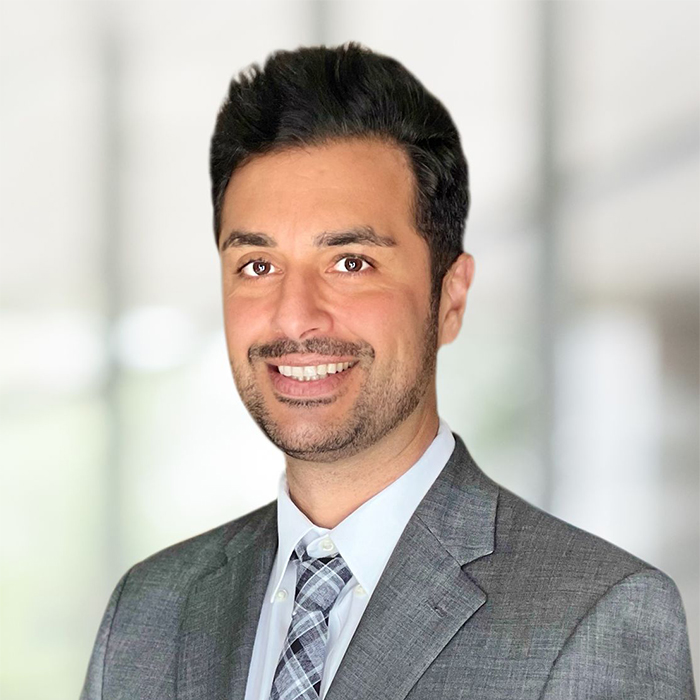 Adam Nemati, PE, RCDD, Principal, MEPCE
Adam Nemati, PE, RCDD, Principal, MEPCE
Adam is an MEP & Technology project manager with a focus on intelligent building design and AI-driven engineering. Adam’s experience spans over 20 years in various project types, with a specialty in educational and research-based buildings. By integrating the design, construction, and operations of the building systems together using advanced technology, facilities can be built and maintained efficiently, lowering the overall construction and operational costs.
|
|
Navigating New Magnets: How Middle School Magnet Specialization is Bringing Students Back to the Classroom |
|
|
Galleon II
In 2020 Northside ISD began an initiative to expand its magnet school programs into the middle school level to expand student experience while reinvigorating enrollment. Using a school within a school model, they planned to open three new magnet programs at existing campuses over the next several years: the first was a STEM focused magnet school at the Anson Jones Campus. The following year they opened a global communications, cybersecurity, and information technology magnet at H. B. Zachry Middle School, and in 2023 they opened a health sciences magnet at Hobby Middle School. Using Hobby Middle School as a case study, our session will explore the benefits and challenges of developing new, specialized instructional programs in existing legacy campuses. We will discuss how the initial masterplan was redeveloped to add the magnet program to the campus, how the design of the building evolved as the curriculum was being developed, and what special requirements were necessary to accommodate specific Career Technology Education (CTE) programs that utilize project-based learning. We will highlight how design charrettes with district CTE, science, teacher, and administrative leaders were utilized during the programming and design process to plan the building. We will discuss other factors that influenced the design including the desire for the magnet program to have its own identity while not overshadowing the traditional middle school, and how the new additions could reorganize and re-invigorate the existing campuses.
Learning Objectives:
- The objective of the presentation is that attendees will gain an understanding of the process the project team went through to master plan and design the addition of the magnet program to the existing aging middle school campus. This includes comparing the existing middle school to the district's current middle school design guide program and proposing solutions which would address deficiencies. The process the team went through to develop a program for the magnet school and then designing a facility that satisfied it. They will be presented the technical challenges that the design team faced and the solutions that were developed when adding a new building addition to the existing campus originally constructed in 1974, and learn what strategies were utilized to improve security at the campus.
 Jerry Lammers, Senior Principal, Alamo Architects
Jerry Lammers, Senior Principal, Alamo Architects
Jerry leads Alamo’s educational facilities studio. He has decades of experience on more than 50 PreK-12 projects. These projects range from complex and challenging remodel/addition/replacements to new-build high schools. The depth and breadth of the knowledge and experience he brings to every project yields innovative educational environments and long-term relationships. Jerry is engaged in our community and received numerous awards for his activism including A4LE’s Southern Region’s Distinguished Service Award.
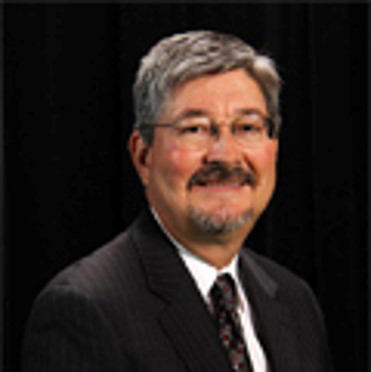 Leroy San Miguel, Assistant Superintendent for Facilities and Operations, Northside ISD
Leroy San Miguel, Assistant Superintendent for Facilities and Operations, Northside ISD
Leroy is the Assistant Superintendent for Facilities and Operations at Northside ISD. He has implemented and overseen over $3.0 billion dollars of bond program work improving hundreds of schools, support facilities, and building new schools. He has held various leadership roles in several civic and professional organizations including A4LE. He believes that his greatest accomplishment and joy is building facilities that will serve the children of Texas for a bright and prosperous future.
|
|
Safeguarding Tomorrow: Navigating the Complexity of Moving Parts |
|
|
Galleon III
In 2023, the Texas Education Agency announced new safety requirements for public schools. The call to address minimum school safety standards includes funding initiatives, but there continue to be a myriad of challenges in implementing the measures. This session will examine newly adopted rules, state funding, scheduling, and the impact of construction unknowns. Join us as we delve further into a district working hard to identify and meet these challenges with a comprehensive approach to designing a framework of practical solutions, as they dissect the question: What is the next step?
Learning Objectives:
- Understand the facility-related highlights of the TEA Adopted School Safety Standards.
- Explore how districts can advocate for more money from the state.
- Examine successful strategies in implementing the new guidelines and how to address roadblocks.
- Explore practical solutions while addressing challenges involved in managing various components within facilities.
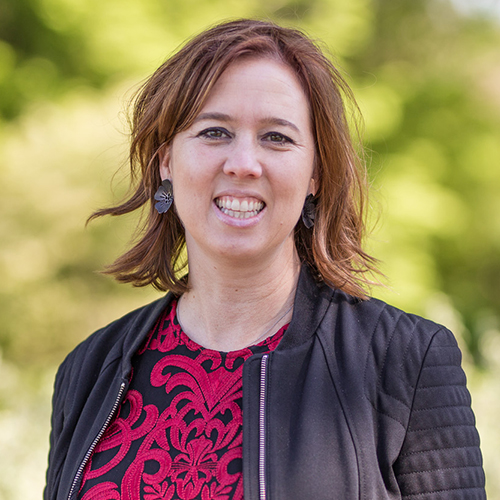 Anne Hildenbrand, AIA, ALEP, Principal, BRW Architects
Anne Hildenbrand, AIA, ALEP, Principal, BRW Architects
Anne is a Principal in BRW’s Dallas K12 studio and leads many of our studio’s most complex projects. A native Texan and the daughter of educators, her commitment to excellence in the design of learning environments is both professional and profoundly personal. She is a strong consensus-builder and believes collaborating with individuals possessing talents, skills, and knowledge different from her own improves the design process.
 Sandra Hayes, Assistant Superintendent of District Operations, Richardson ISD
Sandra Hayes, Assistant Superintendent of District Operations, Richardson ISD
Sandra has 30 years of experience in education, all in Richardson ISD. She began her tenure as a teacher and coach at the junior high level, then moved to central administration.
 Abby Hiles, AIA, Associate Principal, AIA K12 Schools Security Task Force, BRW Architects
Abby Hiles, AIA, Associate Principal, AIA K12 Schools Security Task Force, BRW Architects
Abby has 17 years of professional experience with an acute focus on quality assurance and quality control. Formerly a Director and Project Manager in BRW’s K12 Education Studio, she now serves as BRW’s Operations Director focusing on the integration of operational standards, practices, and technology firmwide. Abby is an agile communicator and excels at leading complex, multidisciplinary teams with highly effective delegation skills.
|